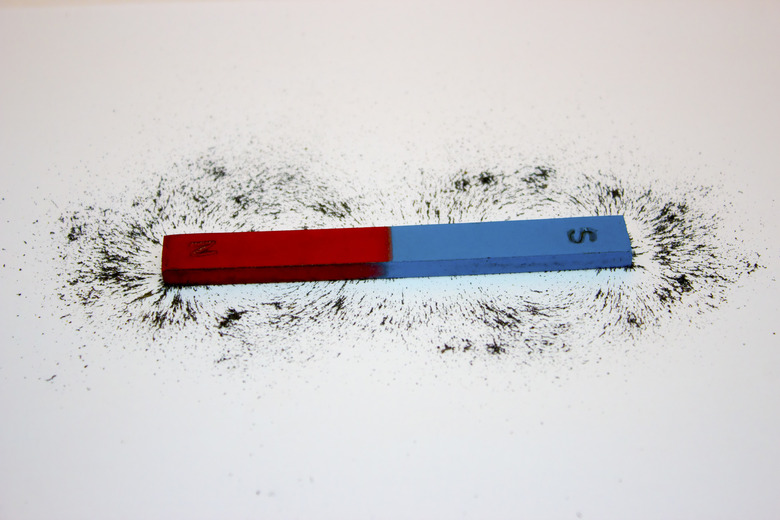How To Create An Electromagnetic Field
The discovery that electricity and magnetism are but different manifestations of the same phenomenon was the crowning achievement of 19th-century classical physics. Scientists now know that the field surrounding a permanent magnet is the same as the field surrounding a wire through which an electric current is flowing; both are examples of electromagnetic fields. You can demonstrate this for yourself by constructing a simple electromagnet and observing its effect on small metal objects, such as tacks or iron filings. You'll be able to compare for yourself an electrically induced field to that of a magnet. Just make sure your electromagnet doesn't run for too long without a resistor– a device that reduces current flow, that you will connect into your circuit– or it might be too hot to handle.
Step 1
Wrap a thin, insulated copper wire around a 6-inch or larger iron bolt or nail, making as many turns as you can fit. The wire shouldn't be too thin, or it might overheat when you pass a current through it, but it shouldn't be too thick either, or you won't be able to make many turns in the coil. Twenty-two-gauge wire works best.
Step 2
Strip the ends of the wire with a knife and tape one end to either terminal of a D-cell battery, using electrical tape. Make sure there' s a good connection. Sprinkle some iron filings on a table and place the nail on top of them, then touch the other end of the wire to the other battery terminal. Watch what happens to the filings, then break the connection to prevent the wire from overheating.
Step 3
Place a permanent bar magnet just far enough from the nail to prevent attraction or repulsion, then touch the wire to the battery terminal. Watch what happens to the magnet.
Step 4
Connect the loose wire to a small resistor in the neighborhood of 30 ohms and connect the resistor to the battery terminal with another length of wire of the same gauge. The resistor reduces the flow of current in the wire and eliminates the possibility of overheating, so you can now leave the wire connected.
Step 5
Observe the pattern made by the iron filings when you place the electromagnet on them, then remove the electromagnet, replace it with the bar magnet and compare the patterns. They should look virtually the same, although one may spread out more or less than the other, depending on the relative strengths of the magnets. This confirms that the fields produced by the magnet and the electromagnet are identical — they are both electromagnetic fields.
Step 6
Hold the bar magnet close enough to the electromagnet to feel an attraction. Turn the magnet around so the poles are facing in opposite directions and feel the repulsion. This confirms that both fields have a north and south pole.
Things Needed
- 22-gauge wire, insulated
- 6-inch iron bolt or nail
- Knife
- D-cell battery
- Electrical tape
- Iron filings
- Bar magnet
- 30-ohm resistor
TL;DR (Too Long; Didn't Read)
To continue your experimentation, try replacing the resistor with a 100-ohm one. You should feel a noticeable weakening in the interaction between the bar magnet and the electromagnet. You can also reduce the number of coils — you should notice a similar weakening of the field. Finally, replace the nail with a cardboard tube. That also weakens the field, because the loosely bound electrons in the nail contribute to the field.
Warning
Make sure to disconnect the wires from the terminals when you are finished with your experiments.
Even with low voltages like this, it is good practice not to touch the battery terminals or bare wire ends while the circuit is connected.
If you smell smoke, disconnect the battery and wait several minutes for the wires to cool before continuing.
Cite This Article
MLA
Deziel, Chris. "How To Create An Electromagnetic Field" sciencing.com, https://www.sciencing.com/create-electromagnetic-field-5135610/. 24 April 2017.
APA
Deziel, Chris. (2017, April 24). How To Create An Electromagnetic Field. sciencing.com. Retrieved from https://www.sciencing.com/create-electromagnetic-field-5135610/
Chicago
Deziel, Chris. How To Create An Electromagnetic Field last modified March 24, 2022. https://www.sciencing.com/create-electromagnetic-field-5135610/
